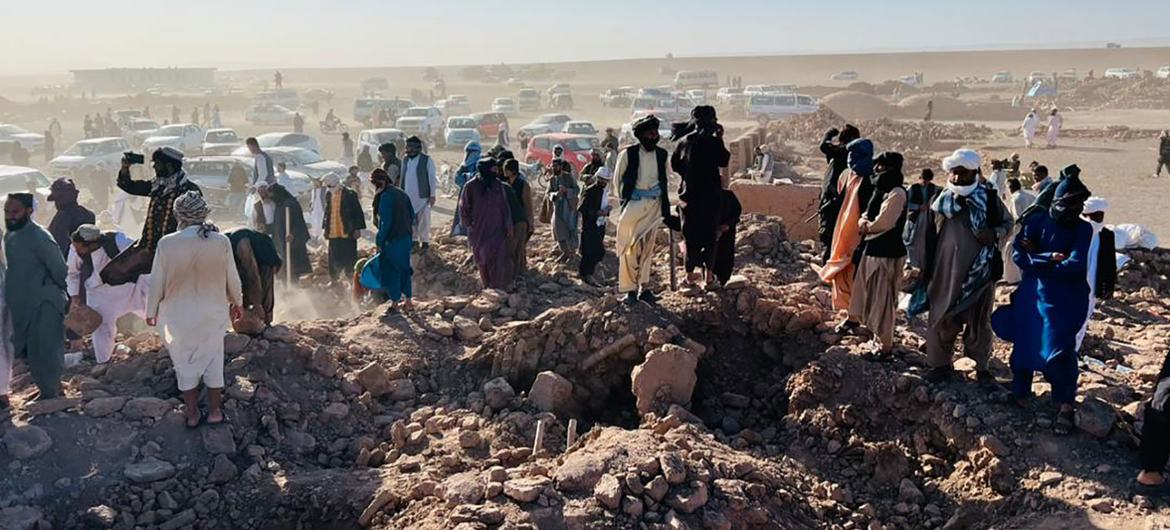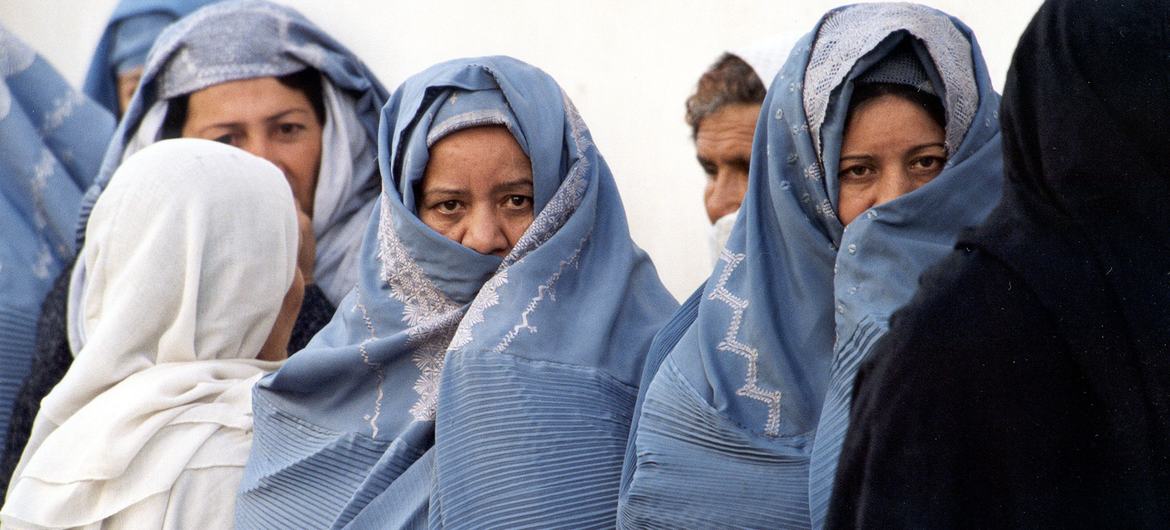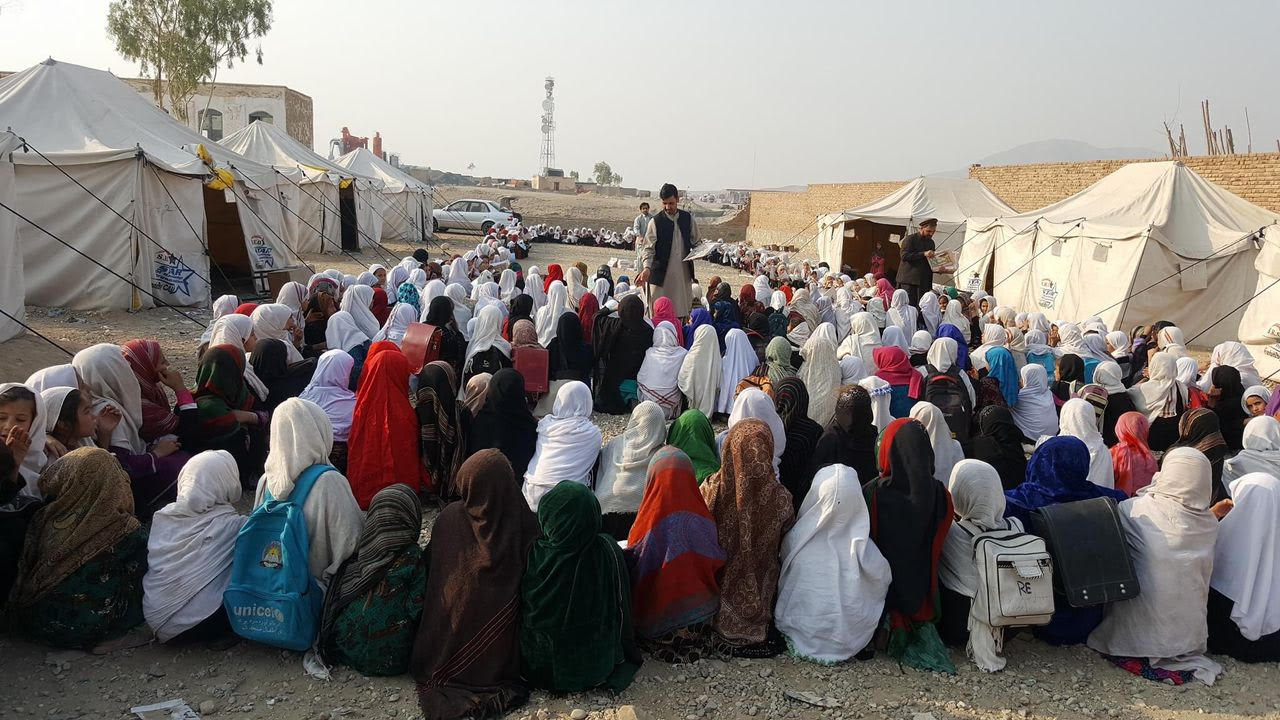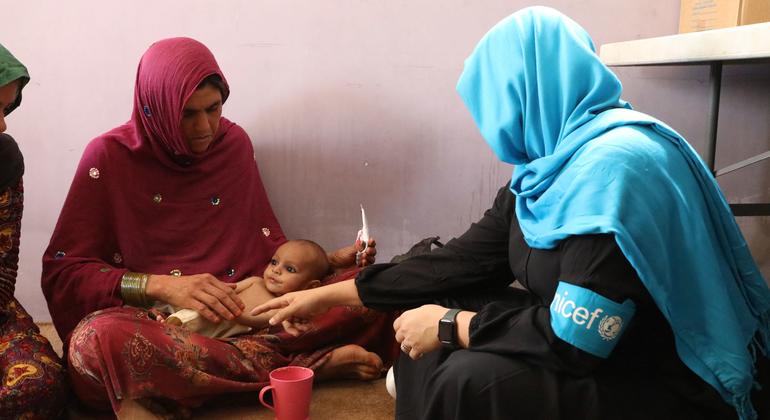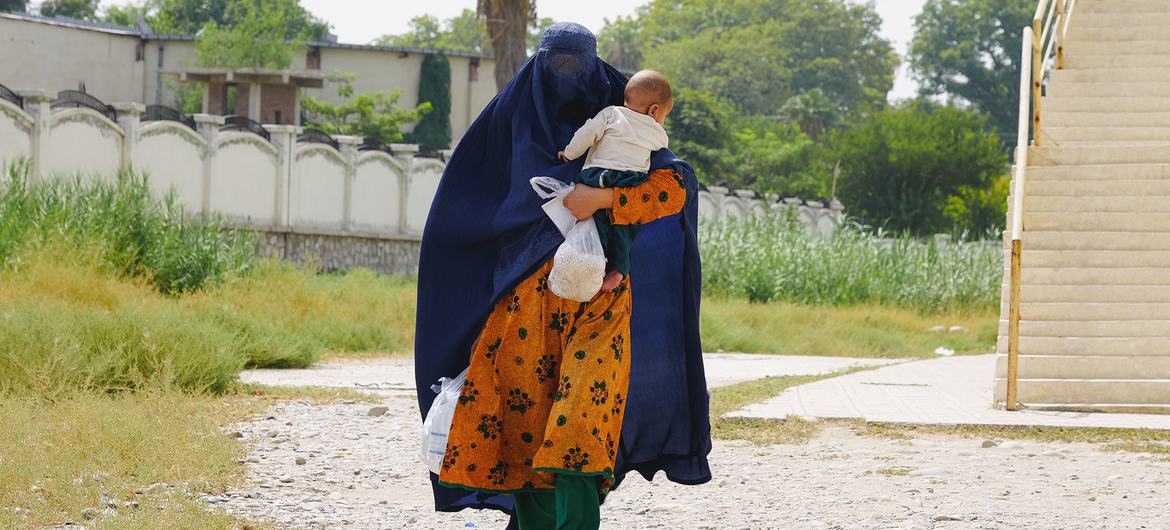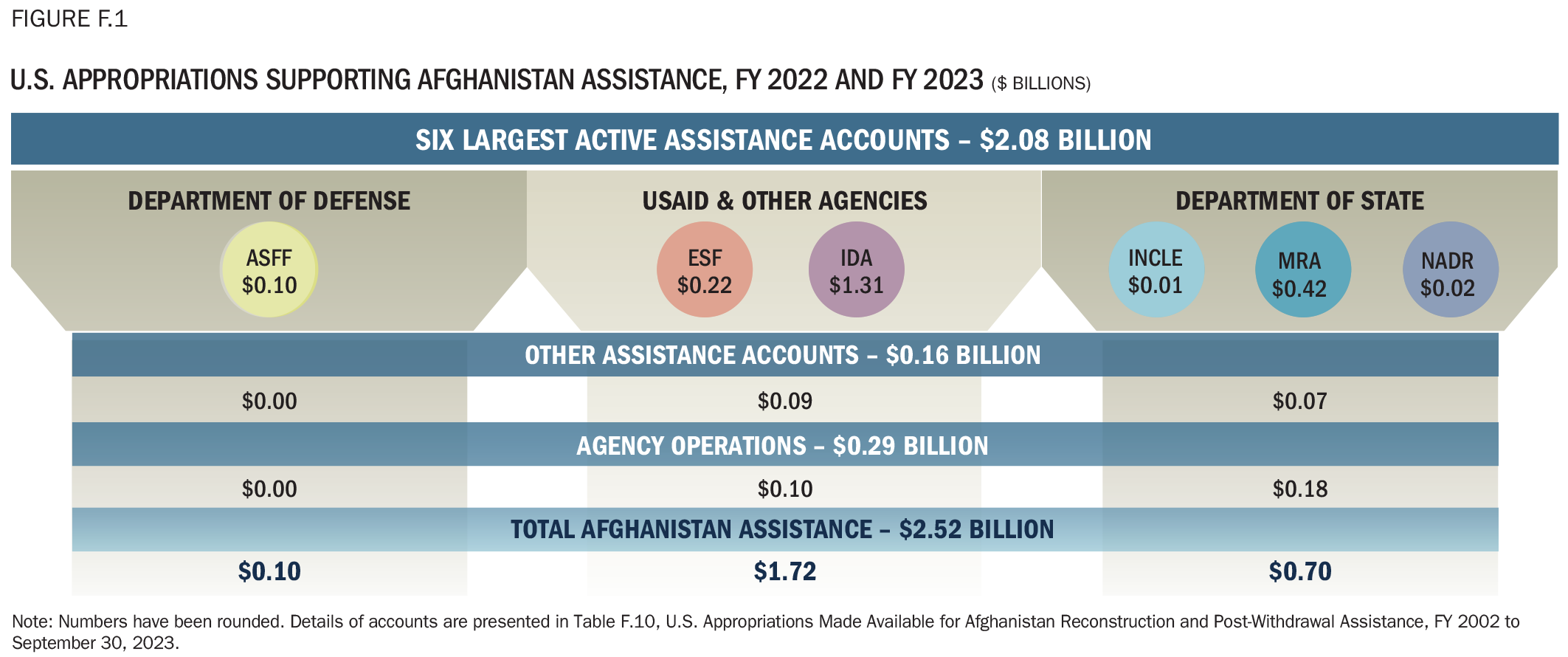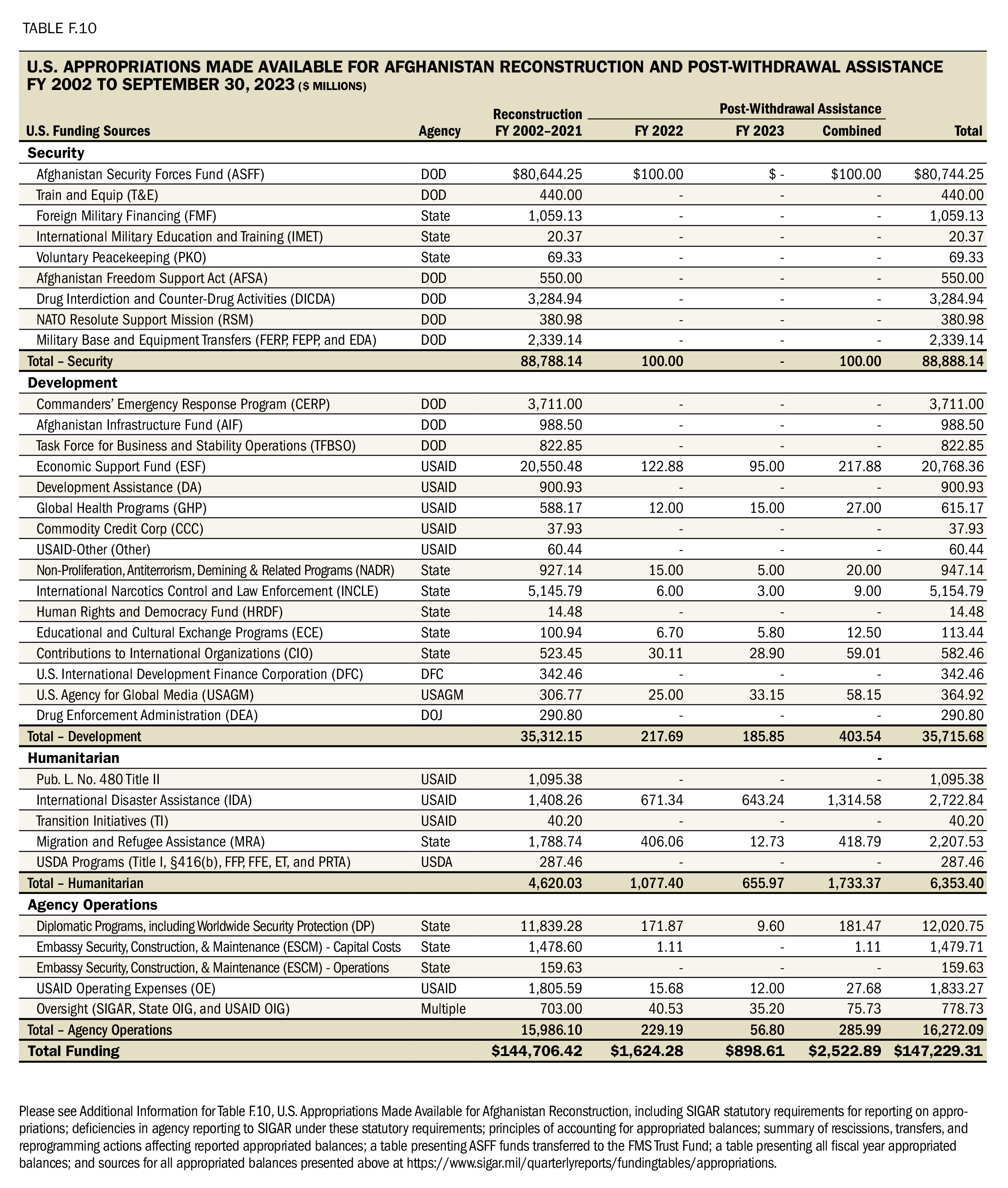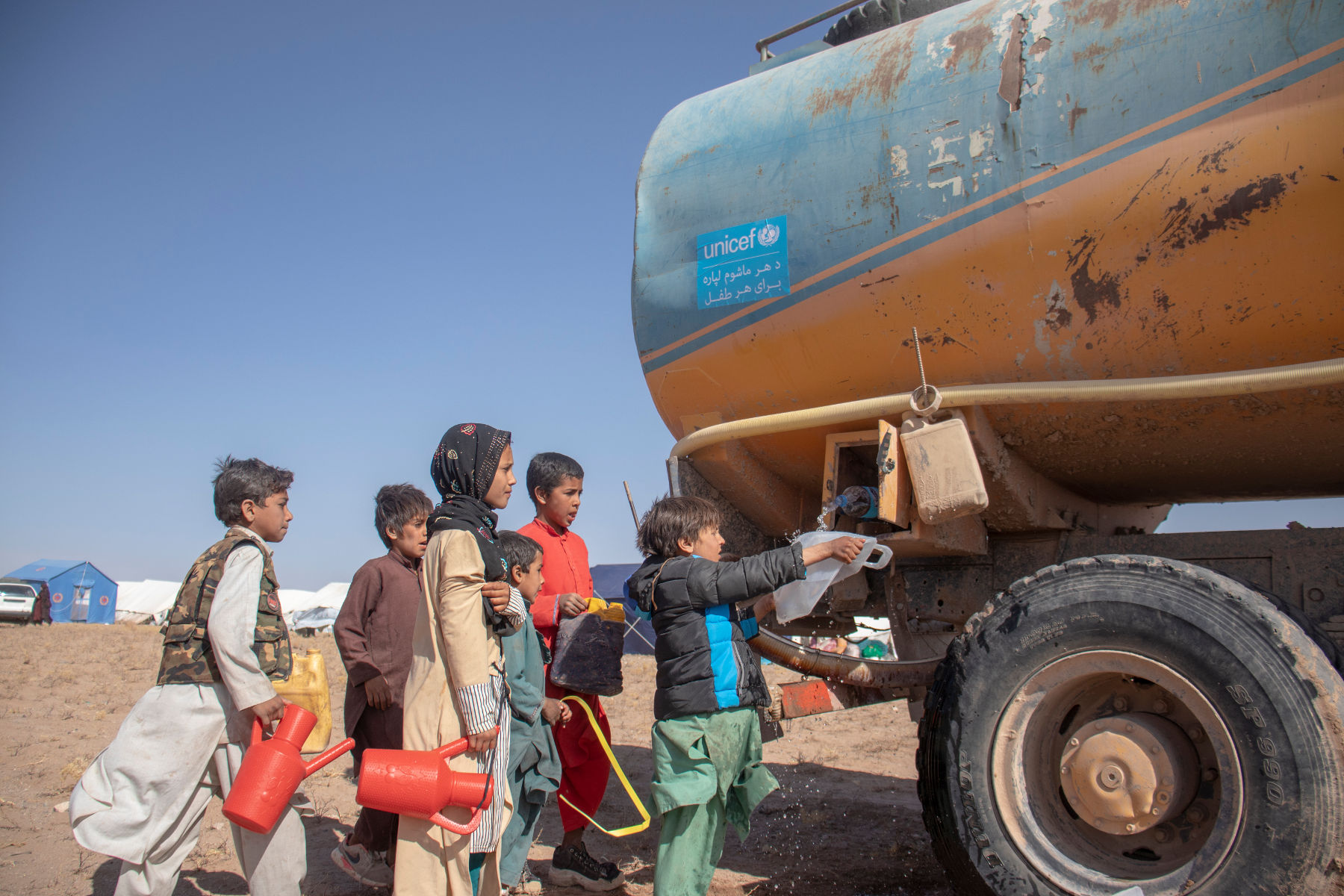
Two years after U.S. forces withdrew from Afghanistan, the United States remains the largest donor to the Afghan people. In that time, the United States has appropriated or otherwise made available $11.11 billion in assistance to Afghanistan and to Afghan refugees. This includes nearly $2.52 billion in U.S. appropriations for Afghanistan assistance, largely for humanitarian and development aid, and over $3.5 billion transferred to the Afghan Fund that is intended to recapitalize the Afghan central bank and for related purposes. In addition, the United States has obligated more than $5.08 billion in fiscal years 2022 and 2023 for the Department of Defense to transport, house, and feed Afghan evacuees.
As shown in Table I.2, more than $1.73 billion of the nearly $2.52 billion appropriated for assistance to Afghanistan since the end of FY 2021 has gone toward humanitarian assistance, representing 69% of the total, and another $404 million, or 16% of the total, went for development assistance.
Table I.2 U.S. Appropriations for Afghanistan Assistance October 1, 2021, to September 30, 2023 ($ Millions)
| Funding Category | FY 2022 | FY 2023 | Total |
|---|---|---|---|
| Humanitarian | $1,077.40 | $655.97 | $1,733.37 |
| Development | $217.69 | $185.85 | $403.54 |
| Agency Operations | $229.19 | $56.80 | $285.99 |
| Security | $100.00 | $0.00 | $100.00 |
| Total | $1,624.28 | $898.61 | $2,522.89 |
Note: Numbers have been rounded. Details of accounts are presented in Table F.10, U.S. Appropriations Made Available for Afghanistan Reconstruction and Post-Withdrawal Assistance, FY 2002 to September 30, 2023.
Source: SIGAR Quarterly Report to the United States Congress, 10/30/2023, Appendix A.
Since 2021, State and USAID have used these funds to restart and begin new programs to address critical needs of the Afghan people in several key sectors—health, education, agriculture, food security, and livelihoods—and are also supporting civil society and media, focusing on women, girls, and broad human rights protections. These efforts are being implemented through NGOs, international organizations such as UNICEF and the World Food Programme (WFP), and other implementing partners.
For example, USAID and State have obligated nearly $826 million in humanitarian assistance in FY 2023. More than half of these funds, or $422 million, will be disbursed to the WFP to provide emergency food assistance to millions of Afghans. Other funds are going to protect Afghan refugees, returnees, and other vulnerable persons; to implement life-saving health activities; to provide emergency shelter for displaced and other vulnerable people; and to deliver livelihoods programing and skills training such as courses to build literacy, skills training, and business knowledge.
SIGAR Quarterly Report“Despite the lack of a presence in Afghanistan, the United States continues to remain strongly engaged in the country.”

